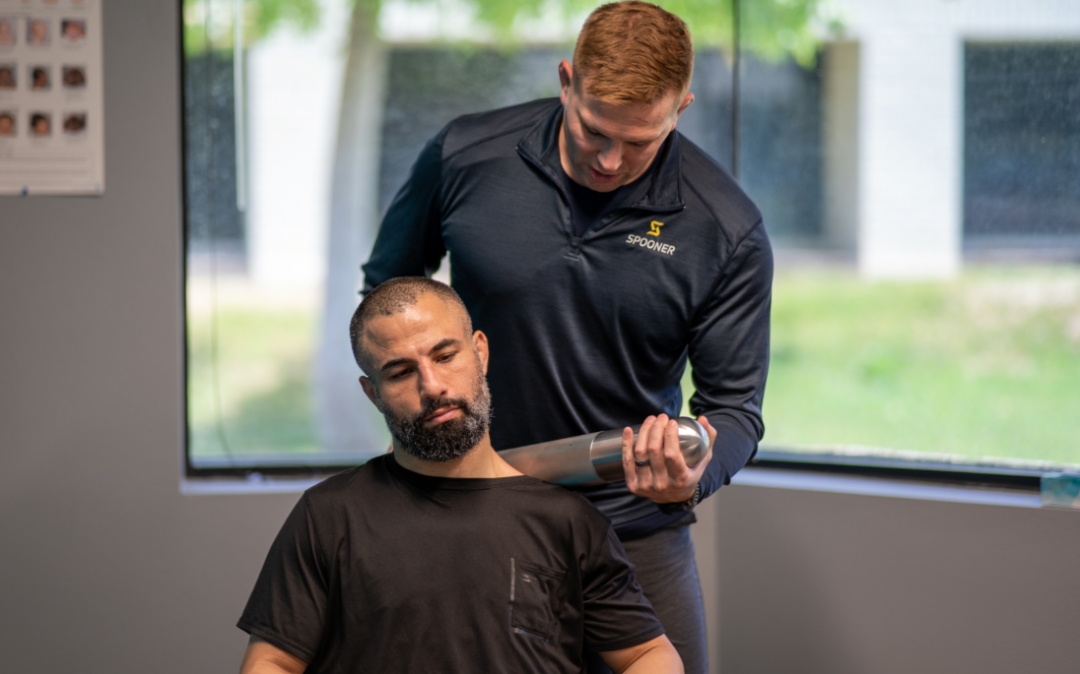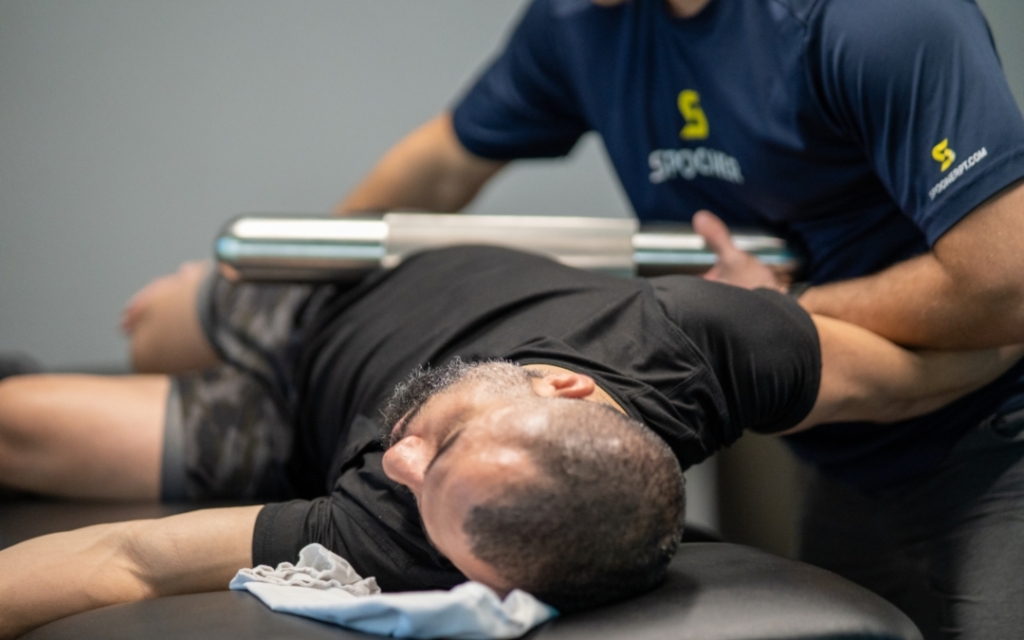By: Ben Kelto, PT, DPT, OCS, CSCS
When steel is tempered, its resiliency increases. Its strength is in its alloys– the smaller particles become tougher through the tempering process. Body tempering, like steel tempering, is all about becoming more resilient at the smallest, cellular level.
What Is Body Tempering?
Body tempering was developed in 2014 by Donnie Thompson for powerlifters in his gym. It involves a weighted cylinder, made either of steel or plastic, that is used on your muscle fibers by sitting statically or by slowly rolling the cylinder along the length of your muscle. These cylinders can weigh anywhere from twenty to over one hundred pounds. It all depends on the amount of pressure you and the clinician you work with wants to use to achieve your goals
The cylinder can either be placed on its length to spread the weight over more of your muscles, or it may be placed on its head to pinpoint specific areas of muscle tightness.
Benefits of Body Tempering
Body tempering is one of many IASTM techniques that exist– such as foam rolling, cupping, and gua-sha– but it penetrates much deeper into the muscle. By compressing on the cellular level, it can help with tissue tension release, overall athletic performance, and recovery.
- Tension Release:
- When you are getting body tempered, your therapist will either have you hold a contraction and breathe while a weight is on you, or you will move your limbs to help further stimulate the stretch. The weight, in either case, added on top of an isometrically contracted muscle, stretches out the muscle fiber and increases its elasticity. This can further release tension in the muscle at rest.
- Overall Athletic Performance:
- By adding weight to a tight muscle fiber, it lessens the tension on the tissue level without lessening your ability to perform athletically later. Increasing the elasticity of the muscles, which helps reduce the risk of soft tissue injuries, improves overall mobility and reduces muscle fatigue. All of this combined can help athletes lift with better form, move better under load, jump higher, run faster, and more.
- Recovery:
- In one study, athletes who received body tempering experienced less delayed onset muscle soreness (DOMS)1. Hydration and nutrition are also key in your athletic recovery. Body tempering works on the cellular level to improve hydration and protein absorption, better helping you move and feel better after strenuous exercise.
Who Should Use Body Tempering
Body tempering puts an immense amount of pressure on the tissue in order to obtain the benefits it achieves. Due to this, it may not be suitable for every person, and it isn’t always used as the first treatment option. It reaps many benefits, but, if the same benefits can be achieved with less pressure for someone, that treatment may be better for them.
Individuals who have poor bone mass, low muscle tone, skin integrity issues, low pain tolerance, or bruise easily will not be a good fit for body tempering. The heavy cylinders may cause more discomfort to them, and other treatments may be more beneficial.
Someone who has a high volume of muscle mass and/or carries stubborn tension that won’t release may see a benefit from body tempering. Body tempering works deeper than a deep tissue massage. Generally, if someone finds that the effects of a deep tissue massage don’t last, body tempering may be the right route for them. This treatment compresses through layers of muscle, allowing for recovery, performance, and release to occur.
Listen to Body by Ben on the Therapists in Motion podcast for an in-depth conversation about body tempering!
A physical therapist can help you determine if body tempering is the next step for your treatment and athletic needs. Schedule an appointment today.
Resources:
- Putnam, John DPT, Cert. DN, Cert. SMT, Serafino, Clint DPT, FAAOMPT, Cert. DN, Cert. SMT, Butts, Raymond PhD, DPT, MSc, Dunning, James DPT, MSc, FAAOMPT, MMACP. Body Tempering for Myofascial Pain & Performance Enhancement: Proposed Mechanisms. Osteopractic. April 5, 2019.


